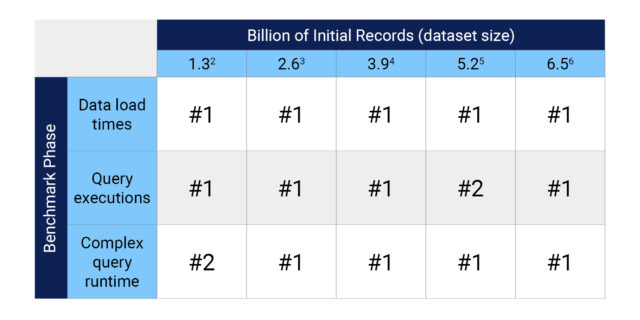To respond effectively to dynamic market conditions, enterprises need to be able to quickly generate and act on intelligence. This has led many to shift to in-memory databases that help enable high-performance computing, faster application response times, and real-time analytics. And the responsiveness of these memory-centric workloads is tied directly to the underlying server infrastructure.
As organizations become more data-centric, the underlying infrastructure used to collect, synthesize, transform, and analyze this data grows in importance. The most effective server platforms for memory-centric workloads can house large amounts of data in close physical proximity to compute. An architecture that can balance cores to large memory footprints, closely connected to high-performing local storage, is ideal for these business-critical workloads.
For these advanced workloads that power the business, Dell employs a rich portfolio of 2- to 16-socket design servers that align with the needs of these applications – richer compute, more memory, high-performance, and localized storage. The Dell PowerEdge R760 server represents a 2-socket platform that balances superior performance, with robust security and availability, while simultaneously reduces costs. Let’s explore how the Dell PowerEdge R760, powered by the latest 4th Gen Intel Xeon Scalable processors, performs in simulations with a variety of users and different analytical requirements.
SAP HANA is an in-memory database platform used to manage large amounts of data in real-time for a variety of purposes, including point-of-sale data, real-time analytics for inventory management, supply-chain optimization and customer behavior analysis. As the amount of data to process grows, it can be challenging for servers to deliver information and analysis quickly enough to meet the increasingly demanding business requirements for fast data access. That’s why SAP HANA users are always on the lookout for better-performing servers.
SAP publishes the results of standardized benchmark tests to assist customers in comparing the performance of different servers when running SAP HANA. SAP recently published performance results for the Dell PowerEdge R760 server, and we’re excited to share some highlights about just how well this server stacks up against other servers.
Fifteen different data points are available for comparing the PowerEdge R760 server to other servers. The standard benchmarks measure three key performance data points for each of the five different database sizes on which SAP tested the PowerEdge R760 server.
The following table shows the rank of the PowerEdge R760 server for each of the 15 points of comparison among all the different servers tested using SAP’s benchmark version. The source of the data is the publicly available SAP Standard Application Benchmarks directory, accessed on April 19, 2023.
 The PowerEdge R760 server outperformed all the other servers in 13 of the 15 benchmark points of comparison, and it ranked second in the remaining two.
The PowerEdge R760 server outperformed all the other servers in 13 of the 15 benchmark points of comparison, and it ranked second in the remaining two.
The PowerEdge R760 two-socket server ,with the latest 4th Gen Intel Xeon Scalable processors, and Micron DDR5 memory, outperforms all other servers in SAP HANA benchmarking – even 4 and 8-socket servers –in every database size up to 6.5 billion initial records. It provides the performance and versatility you need to address your most demanding applications, including SAP HANA with massive databases and mission-critical requirements for real-time performance.
Check out this research preview, Remarkable SAP Benchmark Performance Results for Dell PowerEdge R760 Servers, for an upcoming, in-depth study from Prowess Consulting about how the server performed against top competitors on the SAP Standard Application Benchmarks.
Learn more about PowerEdge servers and Dell Technologies solutions for SAP.
1 SAP Business Warehouse (BW) edition of SAP HANA Standard Application Benchmark demonstrates performance and provides additional scalability and sizing information. This benchmark simulates a variety of users with different analytical requirements and measures the key performance indicator (KPI) relevant to each of three benchmark phases: (1) Data load (seconds) phase, testing data latency and load performance (lower is better), (2) Query executions per hour phase, testing query throughput with moderately complex queries (higher is better), and (3) Runtime of complex query (seconds) phase, testing the performance of running very complex queries (lower is better).
2 For 1.3B initial records, Dell PowerEdge R760 ranked #1 out of the 20 servers tested.
3 For 2.6B initial records, Dell PowerEdge R760 ranked #1 out of the 6 servers tested.
4 For 3.9B initial records, Dell PowerEdge R760 ranked #1 out of the 3 servers tested.
5 For 5.2B initial records, Dell PowerEdge R760 ranked #1 out of the 16 servers tested.
6 For 6.5B initial records, Dell PowerEdge R760 ranked #1 out of the 6 servers tested.

